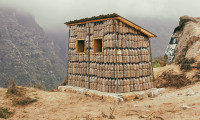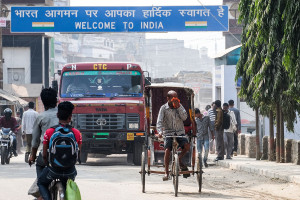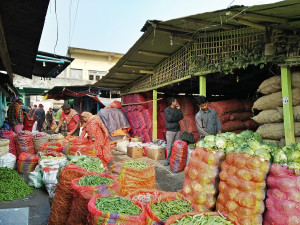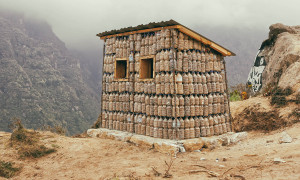Money
Arable land turns barren in Nawalparasi as real estate business booms
A rush to make a fortune by engaging in real estate business has converted huge swathes of agricultural land into barren fields in Nawalparasi district. People are ditching farming and selling their plots of land, as demand for real estate is growing in the district following rise in migration from rural areas.
Nabin Poudel
A rush to make a fortune by engaging in real estate business has converted huge swathes of agricultural land into barren fields in Nawalparasi district. People are ditching farming and selling their plots of land, as demand for real estate is growing in the district following rise in migration from rural areas.
Nawalparasi, located in the western part of the country, has around 79,149 hectares of arable land, according to the District Agricultural Office. Of this, only 70,149 hectares of land is being used for agricultural purpose largely because of shortage of human resources to conduct farming. This means 11 percent of the arable land in the district does not grow anything because most of the youths are working in the Gulf countries and other labour destinations such as Malaysia.
These plots of land that have not been used for cultivation have now come under the radar of property dealers. These dealers are making speculative investment in real estate and are encouraging locals to engage in real estate trading as well.
To raise the price of land, these property dealers and even locals are now building roads on the arable fields, according to Shreekant Ghimire, planning officer at the Nawalparasi District Agricultural Office. This has turned around 3,200 hectares of land in the district into barren fields, which can no longer be used for farming.
“It appears people do not have a long term vision because Nawalparasi has fertile soil,” said Ghimire, adding, “The depletion in agricultural land has reduced agricultural output.”
Today, there is dearth of agricultural land in relatively developed areas of the district such as Kawasoti, Gaidakot, Bardaghat, Sunwal and Parasi. People from rural areas are migrating to these places and buying land because of better public services and the pace at which urbanisation is taking
place. As a result, agricultural fields in rural areas of the district are becoming barren, while real estate prices in places like Kawasoti are surging.
Today, each kattha (0.03 hectare) of land in Kawasoti, for instance, costs up to Rs10 million, which is as expensive as in the capital, Kathmandu. Despite this, over 100 plots of land are sold every day in Kawasoti, according to the Land Revenue Office.
As demand for real estate is growing in relatively developed areas like Kawasoti, property dealers are now moving into villages, where access roads are being built to sell the land at higher prices.
“Heavy duty vehicles, like bulldozers, could now be seen in villages, as property dealers are pooling land in these places where real estate price is relatively cheaper,” Uttam Lamichhane, a local of Kawasoti, said. “So, locals in many villages, who own agricultural land, have stopped growing anything on their fields. These people just wait for property dealers to come and purchase their land so that they can make a small fortune.”
If agricultural fields are left unattended for a long time, the soil loses its fertility and the land eventually becomes barren, according to the agricultural office.




 8.12°C Kathmandu
8.12°C Kathmandu















